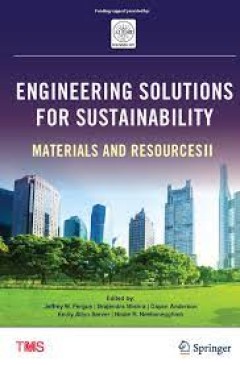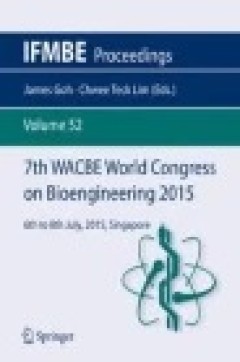Filter by

Time Series Modeling for Analysis and Control
This book presents multivariate time series methods for the analysis and optimal control of feedback systems. Although ships’ autopilot systems are considered through the entire book, the methods set forth in this book can be applied to many other complicated, large, or noisy feedback control systems for which it is difficult to derive a model of the entire system based on theory in that subj…
- Edition
- -
- ISBN/ISSN
- 978-4-431-55303-8
- Collation
- 63 b/w illustrations, 14 illustrations in colour
- Series Title
- -
- Call Number
- -

Enhanced Building Information Models Using IoT Services and Integration Patt…
This book explains how to combine and exploit sensor networks and internet-of-things (IoT) technologies and Web-service design patterns to enrich and integrate Building Information Models (BIMs). It provides approaches and software architectures for facilitating the interaction with (and between) BIMs through Web services, and for enabling and facilitating the fusion of the information residing…
- Edition
- -
- ISBN/ISSN
- 978-3-319-21825-0
- Collation
- 56 b/w illustrations
- Series Title
- -
- Call Number
- -

Engineering the Web in the Big Data Era 15th International Conference, ICWE …
This book constitutes the refereed proceedings of the 15th International Conference on Web Engineering, ICWE 2015, held in Rotterdam, The Netherlands, in June 2015. The 26 full research papers, 11 short papers, 7 industry papers, 11 demonstrations, 6 posters and 4 contributions to the PhD symposium presented were carefully reviewed and selected from 100 submissions. Moreover 2 tutorials are …
- Edition
- -
- ISBN/ISSN
- 978-3-319-19890-3
- Collation
- 225 b/w illustrations
- Series Title
- -
- Call Number
- -

Engineering the Atom-Photon Interaction Controlling Fundamental Processes wi…
This book provides a comprehensive view of the contemporary methods for quantum-light engineering. In particular, it addresses different technological branches and therefore allows the reader to quickly identify the best technology - application match. Non-classical light is a versatile tool, proven to be an intrinsic part of various quantum technologies. Its historical significance has made it…
- Edition
- -
- ISBN/ISSN
- 978-3-319-19231-4
- Collation
- 43 b/w illustrations, 112 illustrations in colour
- Series Title
- -
- Call Number
- -

Engineering and Applied Sciences Optimization Dedicated to the Memory of Pro…
The chapters which appear in this volume are selected studies presented at the First International Conference on Engineering and Applied Sciences Optimization (OPT-i), Kos, Greece, 4-6 June 2014 and works written by friends, former colleagues and students of the late Professor M. G. Karlaftis; all in the area of optimization that he loved and published so much in himself. The subject areas repr…
- Edition
- -
- ISBN/ISSN
- 978-3-319-18320-6
- Collation
- 215 b/w illustrations
- Series Title
- -
- Call Number
- -

Engineering Solutions for Sustainability Materials and Resources II
With impending and burgeoning societal issues affecting both developed and emerging nations, the global engineering community has a responsibility and an opportunity to truly make a difference and contribute. The papers in this collection address what materials and resources are integral to meeting basic societal sustainability needs in critical areas of energy, transportation, housing, and rec…
- Edition
- -
- ISBN/ISSN
- 978-3-319-48138-8
- Collation
- IX, 278
- Series Title
- -
- Call Number
- -

Engineering Secure Software and Systems 7th International Symposium, ESSoS 2…
This book constitutes the refereed proceedings of the 7th International Symposium on Engineering Secure Software and Systems, ESSoS 2015, held in Milan, Italy, in March 2015. The 11 full papers presented together with 5 short papers were carefully reviewed and selected from 41 submissions. The symposium features the following topics: formal methods; cloud passwords; machine learning; measuremen…
- Edition
- -
- ISBN/ISSN
- 978-3-319-15618-7
- Collation
- 63 b/w illustrations
- Series Title
- -
- Call Number
- -

9-12Cr Heat-Resistant Steels
With China becoming a major force in steel research and development, this book highlights the work of a group from the Chinese Academy of Sciences, led by the first four authors. This group has the ideal knowledge base for writing this updated book on heat-resistant steels. The fifth author, Sha, based in the UK, has been collaborating with the Chinese group since 2009 and is the lead or sole a…
- Edition
- -
- ISBN/ISSN
- 978-3-319-14839-7
- Collation
- -
- Series Title
- Engineering Materials
- Call Number
- 621.4 NIN n

8th RILEM International Conference on Mechanisms of Cracking and Debonding in…
This book presents the latest advances in research to analyze mechanical damage and its detection in multilayer systems. The contents are linked to the Rilem TC241 - MCD scientific activities and the proceedings of the 8th RILEM International Conference on Mechanisms of Cracking and Debonding in Pavements (MCD2016). MCD2016 was hosted by Ifsttar and took place in Nantes, France, on June 7-9, 20…
- Edition
- -
- ISBN/ISSN
- 978-94-024-0867-6
- Collation
- -
- Series Title
- RILEM Bookseries
- Call Number
- 620.1 EIG e

7th WACBE World Congress on Bioengineering 2015: 6th to 8th July, 2015, Singa…
This volume publishes the proceedings of the WACBE World Congress on Bioengineering 2015 (WACBE 2015), which was be held in Singapore, from 6 to 8 July 2015. The World Association for Chinese Biomedical Engineers (WACBE) organizes this World Congress biannually. Our past congresses have brought together many biomedical engineers from over the world to share their experiences and views on the…
- Edition
- -
- ISBN/ISSN
- 978-3-319-19452-3
- Collation
- -
- Series Title
- IFMBE Proceedings
- Call Number
- 610.28 SEV s
 Computer Science, Information & General Works
Computer Science, Information & General Works  Philosophy & Psychology
Philosophy & Psychology  Religion
Religion  Social Sciences
Social Sciences  Language
Language  Pure Science
Pure Science  Applied Sciences
Applied Sciences  Art & Recreation
Art & Recreation  Literature
Literature  History & Geography
History & Geography